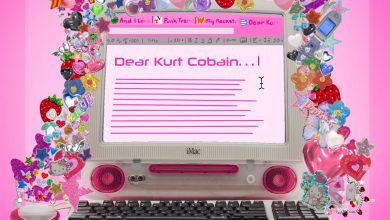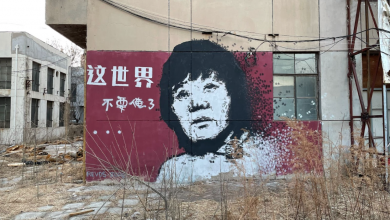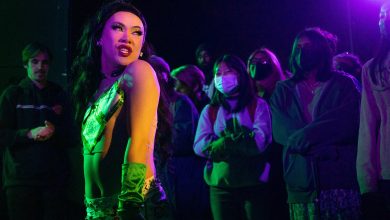Are you a Riot Grrrl?
 “BOY POISON! BOY POISON! BOY POISON!”
“BOY POISON! BOY POISON! BOY POISON!”
She was singing, face beet red, veins popping out of her neck. She screeched again, “BOY POISON!” With great intensity, the front woman kept yelling those words. Allison Wolfe stood there in the doorway of the music venue, awestruck as she thought to herself, “This is amazing.” Mostly frightened and terrified of this girl on stage, she couldn’t resist the amount of power she had over the room. Who was this girl and why could she not look away?
Wolfe had noticed this girl around town all summer, though their exchanges mostly consisted of glares on the bus around her hometown of Olympia, Wash. “She had a shaved head and was so intense I was terrified of her,” recalled Wolfe. “I was more smiley whiley, cutsie wootsie so I’m sure I annoyed the hell out of her.” They finally met when Wolfe managed to get her name on the guest list and gain free admittance to a show through the guy she was seeing. When she got there, she was confronted at the door with the familiar glare as the girl with the shaved head scoffed, “We’ve got bills to pay!”
The girl was Kathleen Hanna. Wolfe wouldn’t find out until years later when the two women were friends that the animosity came from the fact that they were both seeing the same guy and only Hanna knew about it.
When Wolfe returned to Olympia after college, she worried about her direction as she wondered around aimlessly trying to figure out who exactly she was. Meeting Hanna that summer changed everything as the two women, among countless others, would begin a new feminist movement. Combining remnants of the past with their punk rock mindset, they created an extension of third-wave feminism known as Riot Grrrl.
Need for Riot Grrrl
In the late 1970s and early 1980s, years before the Riot Grrrl movement got its name, there was a revolution brewing within the punk scene. Female punk bands like the Slits, the Raincoats and Chalk Circle paved the way for their future feminist counterparts as they dealt with a mainly male music scene. Sharon Cheslow of Chalk Circle spoke out and encouraged other women to reclaim the scene for themselves.
“For anybody out there, if you’re interested in what we’ve been saying, get up there and do something yourself!” said Cheslow in a 1982 interview with her band. “Write a fanzine, form a band, just do something! It’s the only way things are ever gonna change.” These words resonated with women like Wolfe, who took the message to heart as they created their new scene in the 1990’s.
The Beginnings of Bratmobile
When Wolfe was a teenager, she wanted what so many kids out of high school want: to get the hell away from her home town. She attended college in Eugene at the University of Oregon in 1989 and felt as though she didn’t fit into the “hippie town” quite as well as she had hoped. One night, in the hallway of her dorm, Wolfe came across a female student yelling at her boyfriend on the phone.
When Wolfe introduced herself, she and the woman, Molly Neuman, found that their personalities were complimentary and they became fast friends. They talked about feminism and formed a fanzine called “Girl Germs.” They also came up with the name of their would-be band and told people about it as if it already existed.
Though Wolfe had written some poems that would eventually become Bratmobile lyrics, it was not until a friend of theirs asked them to open a show that they actually picked up instruments. The women were clueless about writing songs and sought guidance from a local punk rock friend, who advised them to listen to the Ramones for inspiration.
“I remember something in me was like, don’t listen to the Ramones because then you’ll just sound like everyone else … or a boy band or something,” remembered Wolfe. “It’s funny. To this day I still don’t own a Ramones record.” With Neuman playing both the guitar and drums, Wolfe assumed the role of front woman.
Sticking with the name Bratmobile, the two of them had a month to get ready for their first show. “We were full of shit!” joked Wolfe. “We played and I just had no idea, are these songs? Does this suck?”
The pressure was on but their first show in Olympia on Feb. 14, 1991 was a huge success, “We played and it was fucking awesome,” remembered Wolfe. “It was just incredible and things just started rolling from there.” Bratmobile had the support of friends in the scene like Hanna’s band, Bikini Kill, and even the likes of Kurt Cobain, who showed up just as they finished their last song.
By the end of the show, Bratmobile had an offer to record. “As soon as we finished Patrick Maley came up and asked if he could record us that weekend,” recalled Wolfe.
During spring break of that same year, she and Neuman went to Washington D.C. to follow Beat Happening and Nation of Ulysses on tour. There they acquired their third band member, Erin Smith, on guitar. With the band complete, Bratmobile quickly became the face of the Northwest feminist punk mentality.
Bratmobile vs. Bikini Kill
When the women of the Riot Grrrl movement met up, the understood the rarity of their opportunity to make music with other women. Not only did they play together and support each other, but they also talked about feminist issues. This group provided a safe space to talk about personal experiences with abuse, rape, sexism, racism and classicism.
“It was really an intense time,” said Wolfe. “And it was really awesome because when you’re in your early 20’s, you’re really excited about everything and think you can change the world.” At the time, she and her friends had no idea how integral they would be to the evolution of feminism. “It was a really perfect place because there were so many girls, the girls were so much cooler than the guys, and they were doing so much more.”
Other girl bands in the scene wrote politically charged lyrics that covered a wide range of intensely personal feminist issues. “There always was this feminist element to what we were doing and a lot of that was thanks to Kathleen Hanna,” explained Wolfe. “She was super politicized really early on and was really outspoken about these issues.” Hanna, and later Wolfe, worked for a rape crisis center in Olympia and was forever changed by the stories of these women. As the lead singer of Bikini Kill, a political Riot Grrrl band, Hanna infused their stories into song lyrics while getting a whole community involved in the growing movement.
Wolfe never felt comfortable singing politically charged lyrics and turned her focus to a different aspect of feminism and womanhood. She felt that she had something important to say that was directed more toward building up her fellow woman, “I’m more into confronting with a sense of humor,” she explained. “I like to deal with issues more like women’s self-esteem and how we deal with our own internalization of sexism… but I think there’s room for all types.” The focus of other bands was to be overtly political with their lyrics, like Bikini Kill, but Bratmobile chose to sing about women’s personal empowerment. “A lack of self-esteem inhibits what we can become as women,” said Wolfe.
Definition of Riot Grrrl
Founded in the beginning of the third-wave feminist movement, Riot Grrrl was an attempt to bridge the gap between academic feminism and a new set of third-wave feminist ideals. According to Wolfe, it was meant to reach those who were could not identify with the stuffiness of second-wave feminism. “A lot of us were in academic feminism but there was something about it that didn’t quite speak to us. We were more punk rock and anti-establishment, more DIY, and wanted to make our punk rock worlds more feminist at the same time,” explained Wolfe. “We wanted something more updated where we could use our own language. You don’t have to be highly educated to know when something is wrong… You’re being disgusting to us so why can’t we say ‘fuck you’?”
Riot Grrrl was made the official name of the movement in the wake of the 1991 Washington DC riots. Just days before Wolfe arrived in DC, Jen Smith sent her a letter that said, “…maybe we need a little girl riot too.” Tobi Vail of Bikini Kill had changed the spelling of ‘girl’ in her long-time fanzine talking about angry grrrls and there was something about the name that stuck. ‘Girl riot’ merged with ‘grrrl’ and the movement was officially named ‘Riot Grrrl.’ Bikini Kill had already been using terms like Revolution Girl Style Now, but Riot Grrrl seemed to encompass the entire movement in a way that went along with their specific objectives. In the summer of 1991 they held the first official Riot Grrrl meeting at the Positive Force house in Washington DC. It was the first time all of the Olympia and DC girls got together as a sort of meet and greet.
Tampon, Bloody Tampon
According to Wolfe, the sexism that plagued the punk scene prevented women from feeling safe. At shows, they were expected to stand in the back and take up as little space as possible while the men typically shoved their way to the front. Positive Force, an activist organization based out of DC, planned an outdoor show near the Capitol building for the summer of ‘92 with Bikini Kill and Fugazi performing. When Bikini Kill called for riot grrrls to the front, the mood of the crowd changed. “It wasn’t that the guys needed or wanted to be in front but being told they couldn’t be somewhere was going to flip them out,” explained Wolfe. Standing on the side of the stage, she watched as they became increasingly agitated and women suffered the consequences.
“Why should this not be a safe space for women? Fuck it!” Wolfe remembered asking herself. She then took out her tampon and threw it at the men, hoping it would land in their mouths. “I imagined them singing along to ‘Reclamation’ and it landing in their mouth,” said Wolfe. Her aim was off and it instead looked like she threw the soiled tampon at her long-time friend and singer of Fugazi, Ian MacKaye. “Every time I see Ian I tell him my side of the story over and over again and he’s like ‘yeah whatever Allison!’”
The End of Bratmobile
Once Nirvana became popular, the press in the Pacific Northwest grew and the riot grrrls began to receive unwanted media attention. “I know that when we were involved at the time we felt like we were changing the world, but it was our small little world,” noted Wolfe. “Most of us didn’t know how to harness it in a positive direction.” Some refused to comment or do interviews and those who did were not happy about how they were portrayed.
While the riot grrrls were used to making their own zines and reading book, none of them paid attention to the mainstream media. “To us, that stuff was just garbage and propaganda,” said Wolfe. “It was weird to have the institutions we were against come in and cover us.” Most riot grrrls distrusted the media’s motives and those who did do interviews felt as though the press made them look ridiculous. “It was dismissive and made us and feminism look like a passing fad,” remembered Wolfe.
Those who were not in bands felt damaged by the media and got no financial gain from the attention. This created a tension within the community that the movement would not ever fully recover from and the dismantling of the Riot Grrrl was swift.
According to Wolfe, riot grrrls stopped trusting each other and the bands could not longer agree as to how to proceed. “It was competitive bullshit because we are taught there is not enough room for everyone,” said Wolfe. By 1996, the movement that so many held dear lost its momentum.
Riot Grrrl Lives On
Though Riot Grrrl in its truest form was left in the 1990s, the movement had an effect on the feminist movement of today. “Not a lot of girl bands are overtly feminist these days I think because Riot Grrrl broke down a lot of those barriers,” said Shelina Brown, a musicology PhD candidate at UCLA as well as the guitar player and drummer in Wolfe’s current band, Cool Moms. In this post-Riot Grrrl world, “we have the luxury of not always having to openly fight for feminism because they already have done that for us… They totally opened so many doors like expressing a lot of things that hadn’t been expressed before by bringing feminism to a younger audience and making it real.” As far as Cool Moms is concerned, it’s more about the music than the feminist message, even though the members of the band are clearly feminist.
Max Albeck, a UCLA alumnus, and his band Neonates also draw influence from the Riot Grrrl movement. “With Riot Grrrl, I feel like it’s an isolated music scene,” said Albeck. “Stylistically it’s confined to ‘90s music which is kind of problematic because you can say you’re into Riot Grrrl but people can also imply they are into older bands that influenced Riot Grrrl.”
Almost two decades after the start of Riot Grrrl, there are still activists and fans who proudly describe themselves as “riot grrrls.” In 2010, Sara Marcus wrote a book highlighting the movement entitled “Girls to the Front: The True Story of the Riot Grrrl Revolution.” And there are concerts in Los Angeles dedicated to the women who made punk rock feminist.
For Wolfe, Riot Grrrl will always be about working for the underdog and fighting for people’s rights. She knew she wanted to find a way to fight the system, and music was her way of doing this. “It was something I could really believe in,” said Wolfe. “It spoke to me.” And in accomplishing her own goal, she and her fellow riot grrrls were able to inspire other feminists and shape the the dialogue surrounding gender inequality.
This article originally ran in the Winter 2012 issue of Fem.





Where are these Fem/Riot Grrrl LA shows???